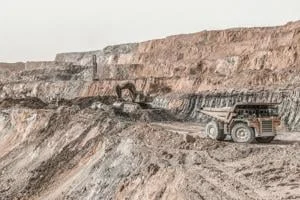President Donald Trump announced a 50% tariff on copper products sold in the United States effective Aug. 1.
Trump said he made the decision after he received a national security assessment, according to a social media post.
“Copper is necessary for Semiconductors, Aircraft, Ships, Ammunition, Data Centers, Lithium-ion Batteries, Radar Systems, Missile Defense Systems, and even, Hypersonic Weapons, of which we are building many,” Trump wrote.
In 2024, the U.S. imported almost half of the copper it used, according to a December 2024 U.S. geological survey. Most of the imported copper came from Chile, the survey found.
“This 50% TARIFF will reverse the Biden administration’s thoughtless behavior, and stupidity. America will, once again, build a DOMINANT Copper Industry,” Trump wrote.
Trump previously announced a 50% tariff on steel and aluminum products sold in the U.S. in June.
Chilean copper mining company Antofagasta reportedly sees opportunities to move forward with a stalled copper production project.
The Biden administration stalled the company’s plans for a copper and nickel mine in Minnesota over environmental concerns in 2022. However, Antofagasta CEO Ivan Arriagada said he sees potential for a new project under the Trump administration’s tariff policies.
Representatives for Antofagasta did not respond to the Center Square’s request for comment by the time of publication.
Arriagada said the project is still years in the making, highlighting the concern of experts who said copper prices will increase dramatically before domestic production can be brought back to the U.S.
Carlos Gutierrez, served as secretary of Commerce in George W. Bush’s administration, told CNBC that the U.S. doesn’t have capacity to offset copper imports.
“Perhaps capacity will be online in 2027 and 2028, assuming that there’s a guarantee that those tariffs stay in place,” Gutierrez said.
He said companies will be hesitant to make an investment if there is not a long term plan to keep tariff rates at the same level. In the meantime, he said there will be shortages and price increases of copper in the U.S.
“The big part of U.S. imports of copper are from Chile, and Chile isn’t part of the game right now,” Gutierrez said.
It is unclear whether copper production will increase in the U.S., but experts and manufacturers appear to be keeping a close eye on Aug. 1 and beyond.






